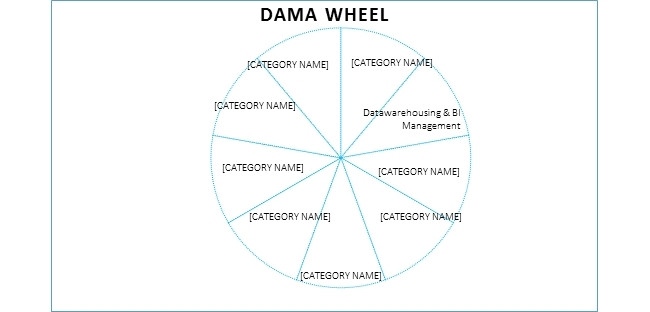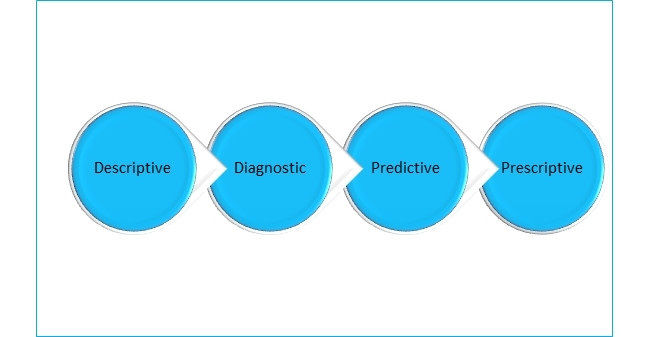Johannesburg, 27 Nov 2017
Analytics experts have been shouting the term "data-driven" for the last decade or so in an attempt to validate the importance of basing decisions on data. As such, the terms, 'data-driven', 'data-driven intelligence', to name but a few, have been proposed in top companies to drive the implementation of such strategies in the decision-support process.
However, a newer and more recent paradigm of this thinking proposes that creating and evaluating metrics on its own, is insufficient to achieving a strong performance (increase in the bottom line), when other organisations are analysing high-level indicators and creating insights as well as predicting potential outcomes. In addition, advocates of this paradigm, such as Forrester and Denodo, have only stated that the data-driven standard is now pass'e.
In addition, according to Forrester, a new kind of company has formed. They are growing at an average of more than 30% annually, are not only customer-obsessed but systematically harness insights across their organisations and implement them to create a competitive advantage through software. This translates into better customer relationships, a more seamless customer experience, better and faster product iteration, and a focus on actionable data. Deloittes Analytics calls this type of company an insights-driven organisation (IDO).
It is essentially clear from the above that these new companies leverage data analytics to achieve these objectives. This may explain why these two terms are often used interchangeably to mean the same thing. Nevertheless, this still therefore begs the question; what, then, is the difference between a data-driven organisation and an insights-driven organisation?
Although there are many differences between the two paradigms, there is one that stands out as a key differentiator and is stated in italics in Table 1.
Table 1: key differentiator
Paradigm | Key characteristics |
Data-driven | Data analytics through evaluation of metrics |
Insights-driven | Data analytics through evaluation of metrics AND connecting actions with outcomes. This is only achieved through the extensive and systematic analysis of relevant data. This therefore enables the likelihood of predicting behaviours, at least to some degree, and achieving a positive outcome. |
The business case for the latter paradigm is therefore clearly demonstrated which accounts for the rise of domains related to data analytics and data science in the realms of business intelligence and analytics. The rise of the latter (IDO) should however not negate the role played by the former (DDO) as this has played a foundation or enabling role to increase knowledge and strategies for future strategies.
While there is a clear key differentiator between the two standards, it is critical to understand that there is a process in moving from the data-driven organisation to an insights-driven organisation. Some of the fundamental requirements to support this transition and build a strong foundation are:
1. Data management principles
If data is to be leveraged as a strategic asset in the decision support process, then it is crucial that a good data governance framework is established and adhered to. This should be clearly defined in an organisation's data strategy to allow for effective operationalisation.
As such, SOIT Business Solutions recommends adopting the DAMA Management functions as per the nine areas detailed in Figure 1 to ensure that any data in the organisation can be utilised optimally to inform strategic and operational decisions.

2. Capacity building
Equally important is the continuous professional development or education of analysts in any organisation to empower the analytical skills required to support the transition to an IDO. Advanced analytics and data science are fast becoming mainstream solutions and competencies in most organisations, even supplanting traditional BI and analytics resources and budgets. They allow more types of knowledge and insights to be extracted from data.
To become and remain competitive, enterprises must seek to adopt advanced analytics, and adapt their business models, establish specialist data science teams and rethink their overall strategies to keep pace with the competition. Table 2 provides some of the essential skills required of such roles in an organisation.
Table 2: capacity building - crucial skills
Programming - scripting and statistical language (R, Python) | Data visualisation and communication | Business Domain knowledge |
SQL knowledge | Advanced Excel | Data interpretation and intuition |
Mathematics (functions) | Machine Learning | Data wrangling |
SOIT Business Solutions' experience in this realm has enabled it to support many of our clients through this transition. Part of this support involves going back to basics and ensuring that there is a sound enterprise architecture framework from which to leverage the new strategy. In addition, SOIT's Learning Academy provides the basic and necessary skills required for the roles that are expected to operationalise the strategy towards becoming an IDO. The model we follow is aptly demonstrated in Figure 2.

SOIT Business Solutions strives to assist customers enrich their business effectiveness and maximise ROI by engaging its unique partner model which enables it to deeply understand clients' industry dynamics and business challenges. This is achieved by straddling the two worlds of technology and business process management, which gives significant advantage in the age of global business where ideas can virtually be transformed into platforms at breath-taking speeds.
Share
